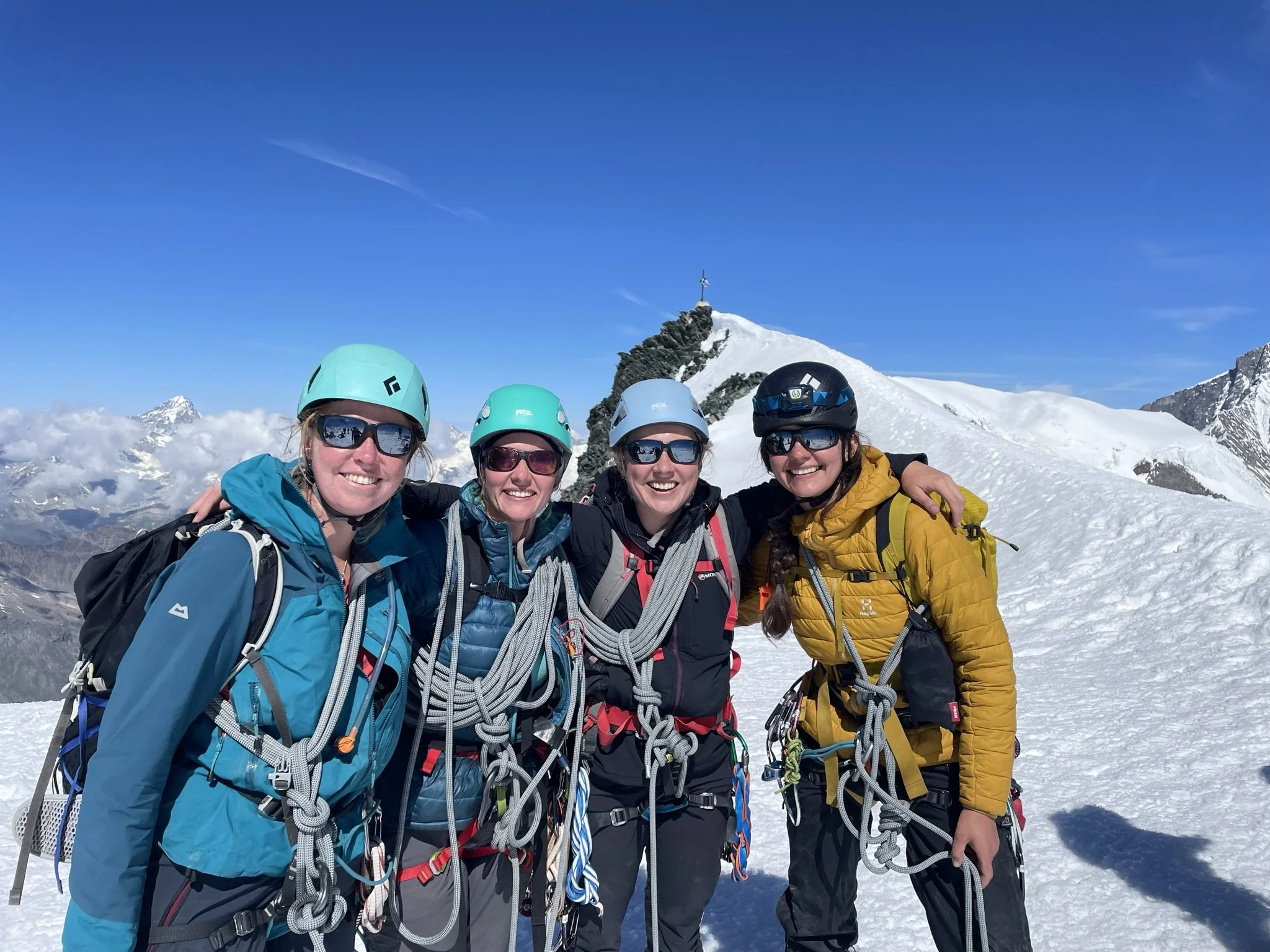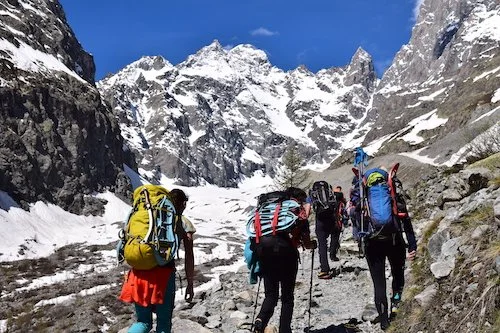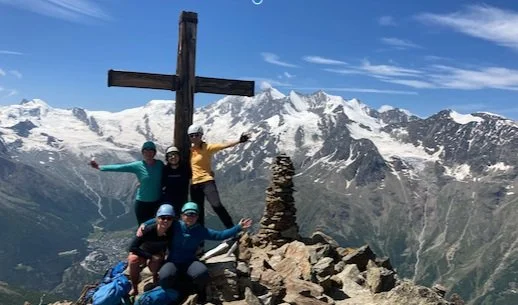What is Alpinism?
Wondering what exactly is meant by alpinism? How it’s different to mountaineering? Is this something I could do? Well, at one point, I wondered the same and here I share my insights with you.
Although Alpinism began in the Alps, it has evolved into its own discipline. The difference with mountaineering is now, not which mountain you’re ascending but, how you get to the summit.
Whilst the term mountaineering can be used to describe the basic phenomenon of a climber getting up a mountain, modern mountaineering usually involves a longer expedition with acclimatisation time, setting up camps, multiple ascents and fixed gear. Alpinism is fast and light. A single push to reach the summit. Ascending a peak in one day (perhaps staying at a high mountain hut) reduces the objective risks of bad weather and avalanches, and requires much less time to do so. Gear is light and minimal; just taking what you need for the conditions on that day. It could be argued to be more authentic, without the extensive preparation and back-up support of mountaineering.
Heading up to the Glacier Noir in the Écrins National Park, France. WAAC meet 2019
Alpinism involves multiple modes of travel and skill sets, potentially all in the space of a few hours. Often the ascent starts with a long walk-in and/or scramble to reach an overnight hut, perhaps through the lower pastures of an alpine valley before reaching higher rocky ground and ridges. Many climbers choose to wear lighter approach/trail shoes, saving their big boots for later – or, with the advent of light alpinism (more resembling mountain running), perhaps not at all. After the hut stay and a pre-sunrise start, glacier travel is often involved; a short crossing or a winding zigzag up a long, steep glacier. This part of alpinism is seeing huge changes due to the devastating effects of a warming planet, rapid glacier retreat and alarmingly fragile mountains. Higher up the mountain is usually where the more technical part of the climb occurs, perhaps a rocky ridge to climb, or an icy gully. These climbs may be pitched, using fixed pitons or placing gear, or climbers may choose to move together – a short amount of rope between them, weaving it through rock spikes and blocks to catch or slow a fall. A short abseil may be involved to lower down a small gap, again either climbing style or a quicker, moving descent.
So, the alpinist is required to be a master of many skills. The route planning, weather reading and risk assessment that starts pre-trip and continues throughout the ascent; monitoring the day’s conditions, weighing up serac fall risk, recceing a glacier traverse and working out timings. Once on the glacier, knowing how to travel with your partners is essential; keeping the rope a safe distance, being able to arrest a fall and perform a crevasse rescue (a skill that, unless used regularly, requires refreshing every trip), and moving efficiently with all your gear. There’s likely to be some level of climbing involved, however technical, with the added challenge of doing this in crampons and big boots. This requires, not only rope, gear placement and moving expertise, but also being comfortable and safe in winter gear and conditions. The risk of cutting the rope or someone else’s finger with your crampons is all too present, and there’s no option to swap into rock shoes on an icy ridge. All of this requires a high level of fitness, excellent team communication skills and resilience to push on at points when it feels particular tough. Moving efficiently is key to safety so preparation is vital – from your kit and route choices, to the snacks you take and how you layer your clothing.
We’ll talk more about different grades, kit, route ideas etc. in our other blogs and videos, but hopefully this gives you a better idea of what alpinism is and whether you’re intrigued to give it a go!
On the summit of the Jegihorn in Saad-Grund. WAAC meet 2023




